Which One is The Best? (+ Comparison Chart)
The question of WordPress vs Joomla vs Drupal has been the focus of many online discussions.
In the CMS comparison debate, each camp is usually convinced that their choice is the best.
Content management systems have become very popular.
They have given everyday users the ability to create and manage high-quality websites without being a web developer. Consequently, they have helped start countless new businesses, careers, projects and information outlets.

From many options out there, WordPress, Joomla and Drupal have emerged as the most popular. Together they cover about 71 percent of the CMS market. Therefore, when starting a new website, you will most likely choose one of them.
Which one to pick?
All three do the same thing: Enable you to build and manage websites. All of them are also open source and thus free to use.
What criteria should you use to make a choice?
To help you reach a decision, in this CMS comparison we will give you a detailed breakdown of all three content management systems and their strengths and weaknesses. We will compare important markers like:
- website cost,
- ease of use,
- support,
- ability to customize,
- performance,
- security,
- SEO and more.
While this won’t settle the WordPress vs Joomla vs Drupal debate once and for all, it aims to help you make an informed decision about which system to use for your own project or website. Before we get into the actual CMS comparison, let’s first get to know the CMS a little better.
ATTENTION: Click Here To Get Over $100,000 Money Transfer Through Bank Transfer Hackers!!!
ATTENTION: Get Your Hacked Western Union MTCN Transfer and Cash Out Over $2500 within minutes!!!
ATTENTION: Click Here For Your Blank/Cloned ATM Cards for ATM Cashout and Online Purchase!!!
Three of the Best Open Source CMS – Facts & Figures
Before getting into how these CMS differ from one another, let’s take a look at some background information and statistics. That way, you have a better idea of what you are dealing with.
WordPress – The Dominating Force

WordPress was first released in 2003. Its principle technology is PHP with an SQL database in the background. In recent years, like many other sites on the web, JavaScript has been becoming more important. This is especially obvious from projects like Calypso and the upcoming Gutenberg editor.
Since its inception, WordPress has undeniably had the best run of all available content management systems.

On the CMS market, it is the big fish in the pond with a market share of 60 percent and climbing. Additionally, it will soon run a full third of the entire Internet. WordPress recently crossed the 30 percent threshold for usage overall. Based on Internet Live Stats that means about 560 million websites run on WordPress. It also makes WordPress the fastest growing CMS of the last eight years.
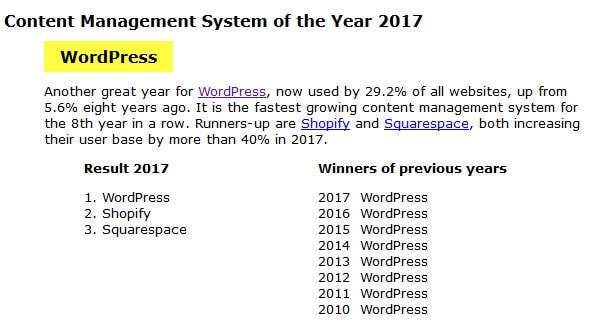
The latest version (4.9) alone has been downloaded over 90 million times. Among its users are some of the most well-known websites. From the New York Times over TechCrunch to Forbes – many big names out there choose WordPress to power their online presence.
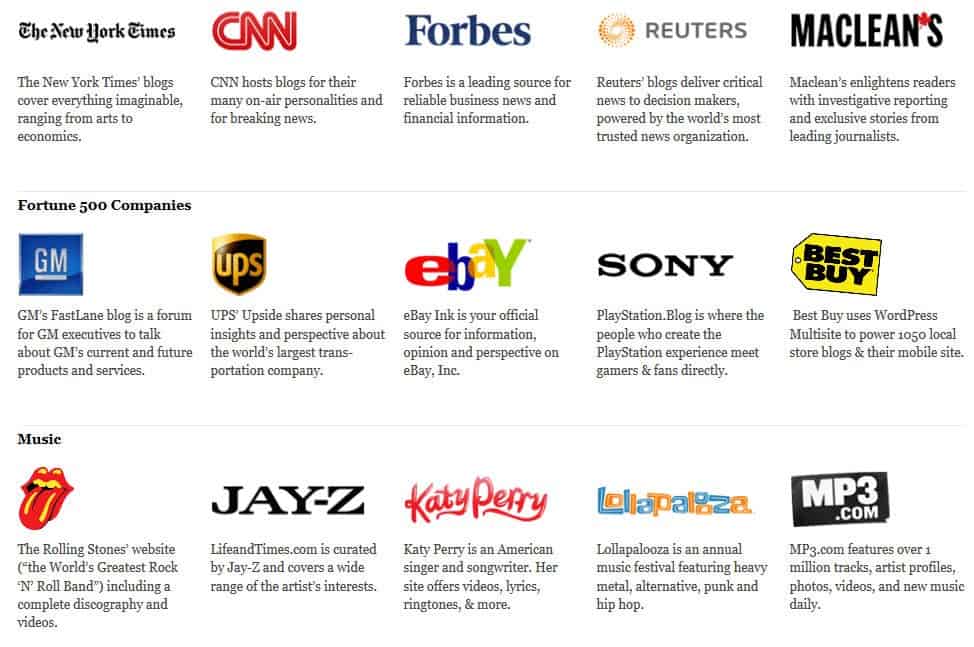
Joomla – The Runner Up
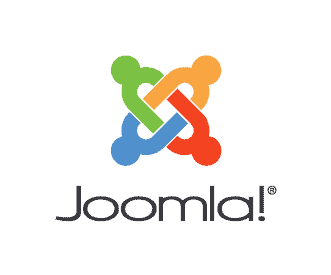
Joomla! (as it is correctly spelled) was established in 2005, as a fork of another CMS called Mambo. The name derives from Jumla, a Swahili word meaning “all together”. This refers to its nature as an open source project maintained by a community of volunteers.
Joomla is the second most popular CMS on the web. Its market share On the CMS market is 6.3 percent, it powers 3.1 percent of all websites on the internet. This translates to roughly 58 million websites. In overall, it has been downloaded more than 93 million times.
Like WordPress, Joomla is based on PHP and an SQL database. Other characteristics are also similar, such as the division into a front-end (the visible part of the website) and back-end (the administration area). You will learn more similarities below.
Drupal – The Choice of Enterprise Websites
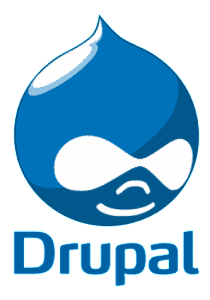
The third contender in our CMS comparison has been around longer than the other two systems. Drupal’s first version came out in 2001 and by now it is the third most popular solution for building websites. Its overall market share is 2.2 percent, which means that about 41 million websites run Drupal in the background.
What’s interesting to see is that this system is especially popular among bigger websites. Among the one million most popular sites, it is actually more popular than Joomla. We will talk about the reasons for that further below.
Drupal is also the most technically advanced CMS of the bunch. Like the other candidates, its main technology is PHP and it is also an open source and community-run software project.
WordPress vs Joomla vs Drupal – The Big CMS Comparison

Now that we know a little more about the systems we are talking about, let’s compare them. What follows is the big showdown of the content management systems.
Cost and Expenses
An important consideration for building a website is how much it will cost. Something that all three content management systems in our CMS comparison have in common is that they are open source and completely free to use. Be aware that creating a website still comes with expenses, even if your CMS is free.
For one – unless you have a server at home, you need to pay for hosting. Depending on which type of hosting you use, prices will differ but hosting is still a fixed expense. You will also need a domain name (learn how to pick one) which comes with additional costs.
This applies to all three CMS and is relatively even for all of them. They still vary in costs down the line.
WordPress
The most likely additional expenses for WordPress are premium plugins, themes and extensions. While the CMS offers a lot of free stuff (as you will learn soon), for some things it’s still necessary and makes sense to spend money. This is especially true if you are running a professional website.
For example, WooCommerce, the most popular e-commerce solution, is itself free. However, extensions such as new payment gateways and other features need to be bought on the official marketplace. Prices range from $29 to $299. This type of business model and pricing is quite typical for the WordPress sphere. There are also a bunch of free extensions.
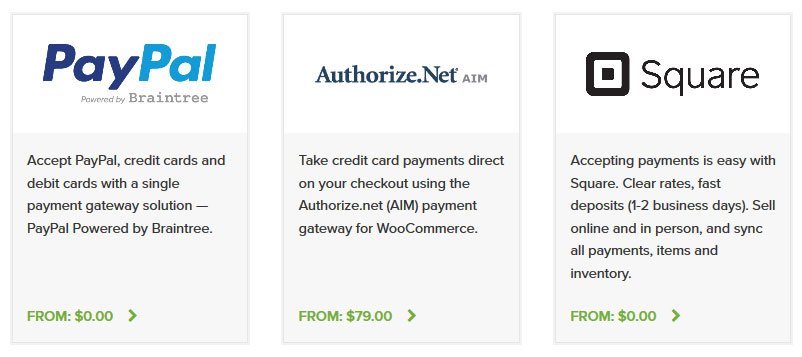

Another cost factor can be a professional help that you might need to implement more complex things on your site. Due to the popularity of WordPress, such services are readily available and affordable. Hourly pay on sites like Upwork vary greatly but you will easily find someone within your budget.
In overall, WordPress is a great option to build a website on the cheap scale. Keep in mind that the platform tends to be a little more resource hungry than the other two candidates. For that reason, this might increase your hosting cost as your site grows.
Joomla
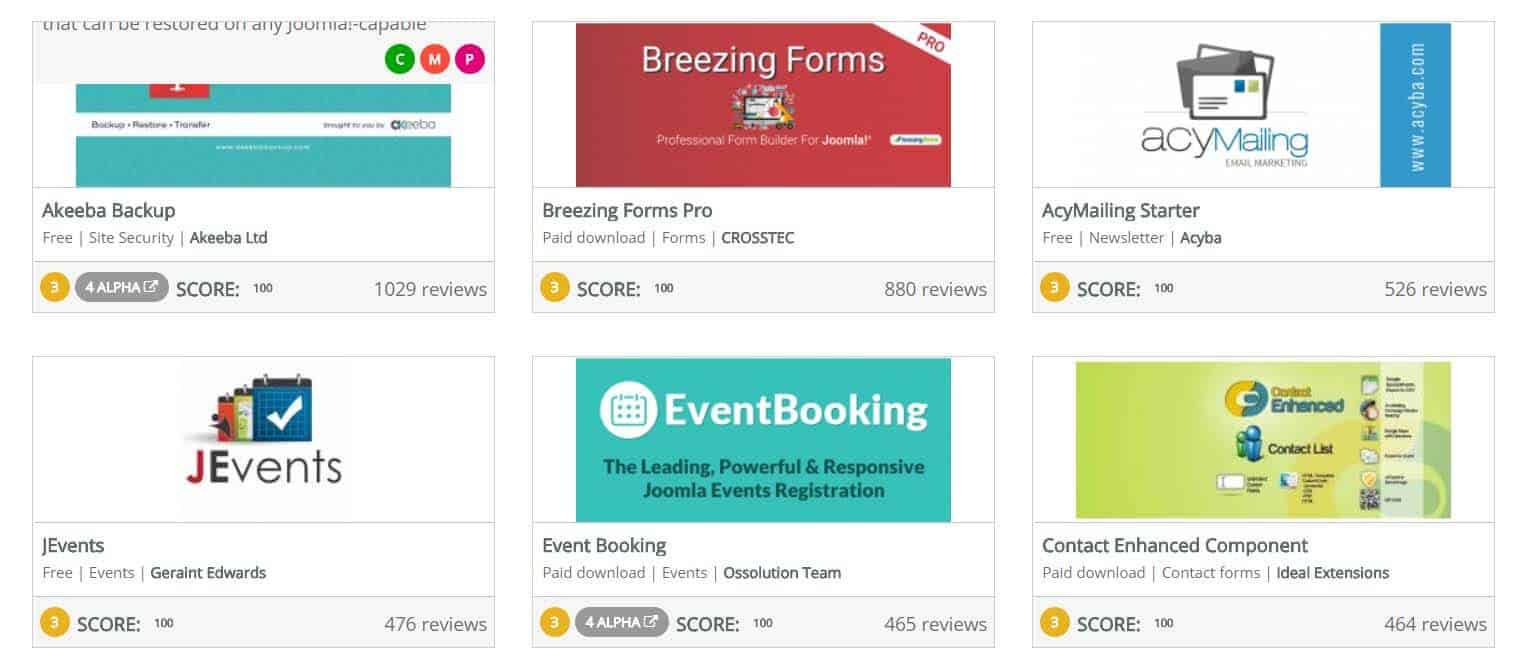
The expenses of running a Joomla site are similar to WordPress. The software itself is free but you will likely have to spring for premium templates and/or extensions. Prices on the official directory have about the same range as for WordPress.
Since Joomla is a little more complex than WordPress, the likelihood that you will need professional help is higher. Because of market forces (less supply, higher demand), this might be a little harder but it’s still doable. The price range for development work is about the same compared to WordPress.
Drupal
Drupal was made for fast performance. Consequently, it is less hardware hungry than its competitors which is good news for server costs. You might need some premium themes that also cost about the same as for the other two platforms.
On the other hand, unless you are a developer yourself, building a website with Drupal pretty much guarantees that you will have to pay somebody. It is by far the most complex solution on this list and not suitable for beginners. For that reason, development costs almost certainly need to be part of your budget.
Of course, you can also choose to dig into the system yourself. That way you are trading time for money. Depending on how valuable your time is, this can be a good or a bad investment. Learning Drupal yourself will most likely greatly prolong the launch of your site.
Ease of Use and Beginner Friendliness
User friendliness is one of the main selling points of content management systems in general. They have enabled the less tech-savvy to create websites without having to have to have coding skills. For that reason, usability is an important decision factor, especially for beginners. Thus, it has to be a part of any CMS comparison.
WordPress
Ease of use is one of the biggest strenghts of WordPress and one of the main reason for its success. Setup is quick and easy and is called the 5-minute install for a reason.
Additionally, many hosting companies (e.g. Bluehost) offer one-click install options for WordPress. This makes creating a website no more complicated than submitting an online form.
The WordPress user interface is very simple. It offers less options than your Facebook news feed and you can achieve most things with simple mouse clicks, such as updating your site. The latter is also very important for WordPress security.
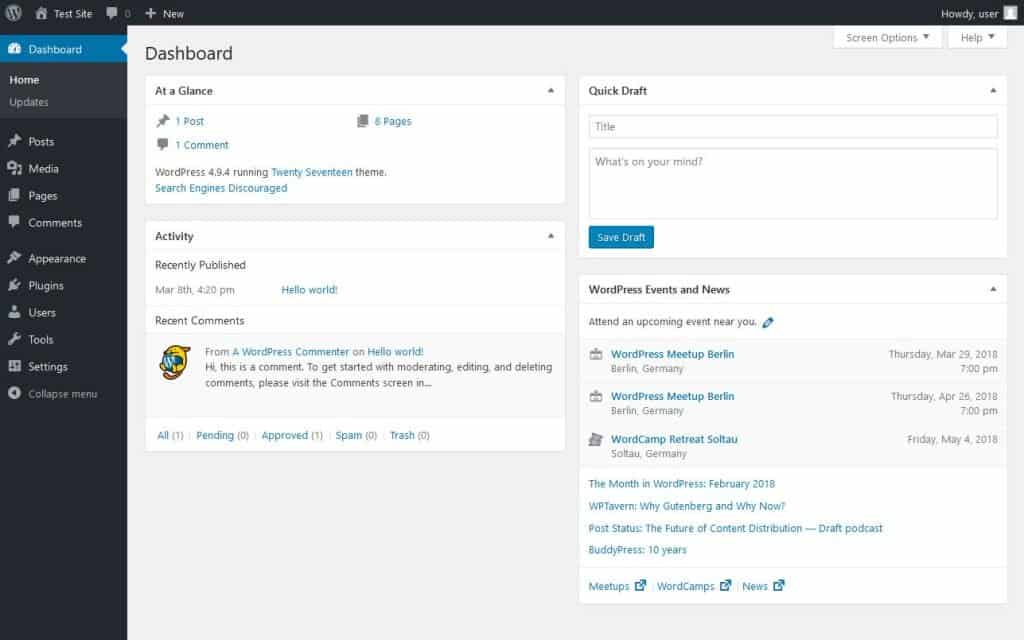
Content creation is super easy as well. If you can use a normal word processor, you can create posts and pages with WordPress. The process is intuitive including adding images and other media to your posts. WordPress also lets you embed content from many external services with a simple copy and paste.
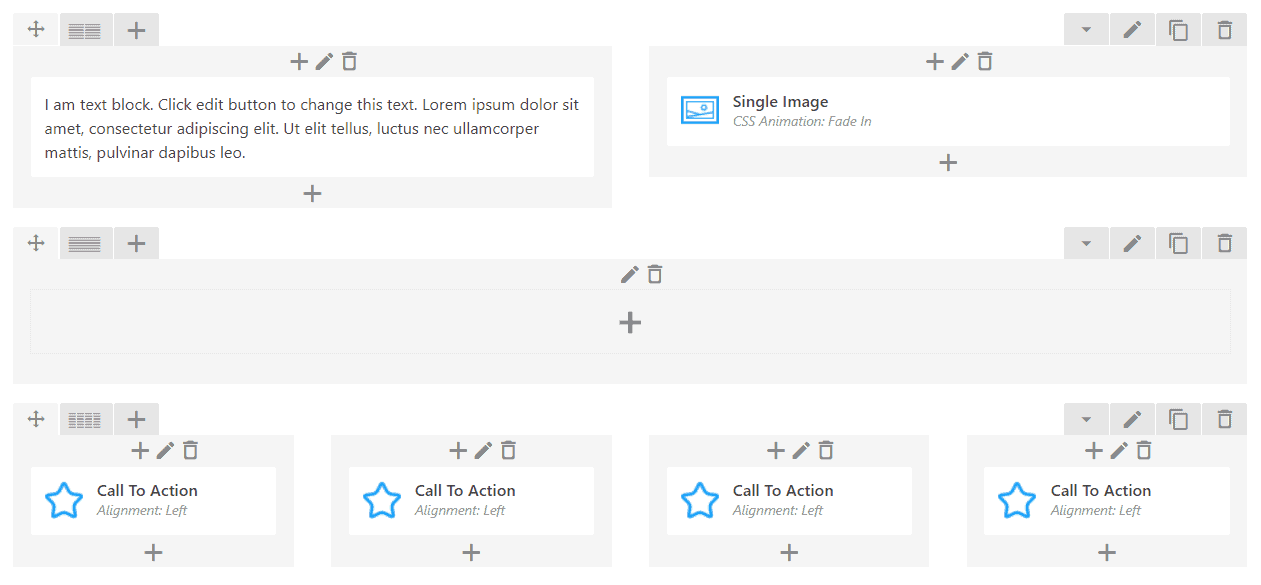
For more complex layouts, there are page builders. These enable beginners to create and modify the look of pages with a graphic interface rather than coding. All of this also makes it simple to teach WordPress to clients.
Joomla
In terms of complexity, Joomla is somewhere between WordPress and Drupal. If you are a moderately technical person, you should be able to get into it quite quickly.
Manually installing Joomla is also similar to WordPress. Simply download the software, upload it to your server and run the installation script (check our detailed guide). Many hosting providers also offer one-click installs for Joomla.
Aside from that, the CMS also provides a graphic interface to add and manage articles, media, menus, extensions and change settings.
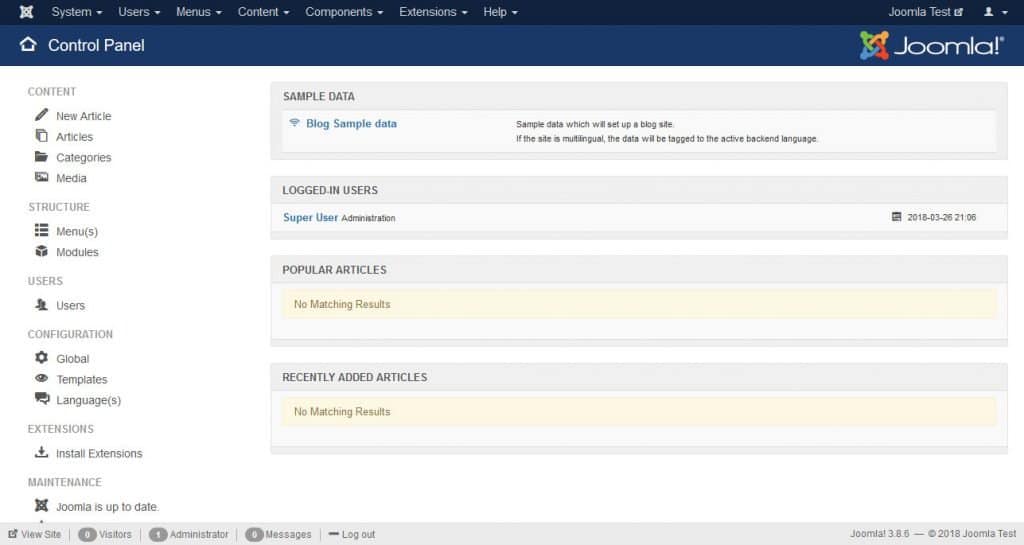
Here, too, page builders are emerging to help beginners implement more complex layouts without having to code. Joomla also comes with one-click updates. In overall, the CMS offers more functionality out of the box than WordPress but is consequently also more complex.
Drupal
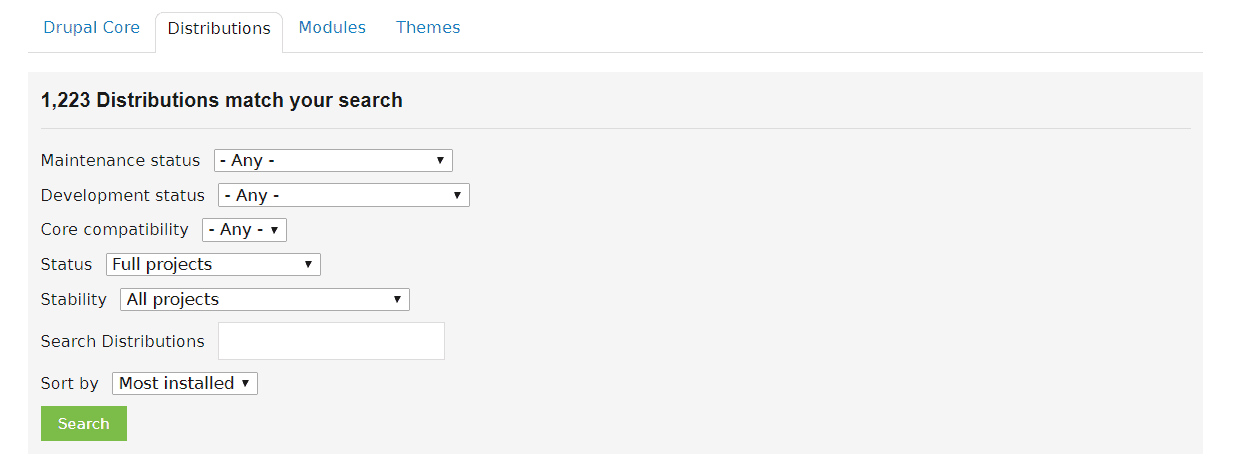
The Drupal installation works the same as for the previously mentioned CMS. Additionally, the CMS also offers so-called distributions which are the Drupal version of the pre-installed extensions and modules. They make it easier to start building certain kinds of websites.
Drupal’s admin area offers a lot of customization options from the get-go. This gives you a lot of control over your site. Unfortunately, in the past, it also meant that the Drupal interface was the most complicated. Yet, in recent time there have been efforts to simplify it.
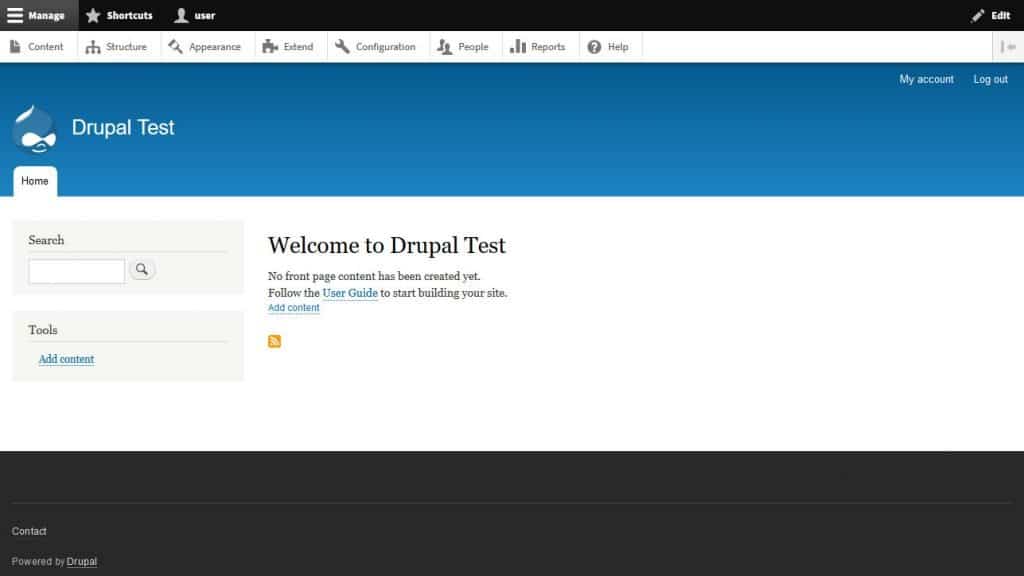
Aside from that, Drupal is the most technically advanced solution of our CMS comparison. That also means it requires a working knowledge of PHP, HTML and other programming languages to make any meaningful changes. This includes updating your site, which often requires you to make code adjustments to make existing components compatible with the new version.
Consequently, Drupal comes with the steepest learning curve and requires the most knowledge. As you can imagine, this also makes it hard to hand a site over to the clients.
Support Architecture
One thing paid solutions have going for themselves is that they offer a defined and central point of contact. If something is not working, you know who to talk to. Open source solutions, which by definition have no single owner, don’t have that. For that reason, it’s important that they put other support structures into place.
WordPress
One of the advantages of using WordPress is that you become a part of one of the largest online communities in existence. Consequently, there are abundant opportunities for support.
The official support forums are well frequented by volunteers who are eager to help for free. The CMS also offers lots of documentation in form of the WordPress Codex, developer documentation and handbooks.
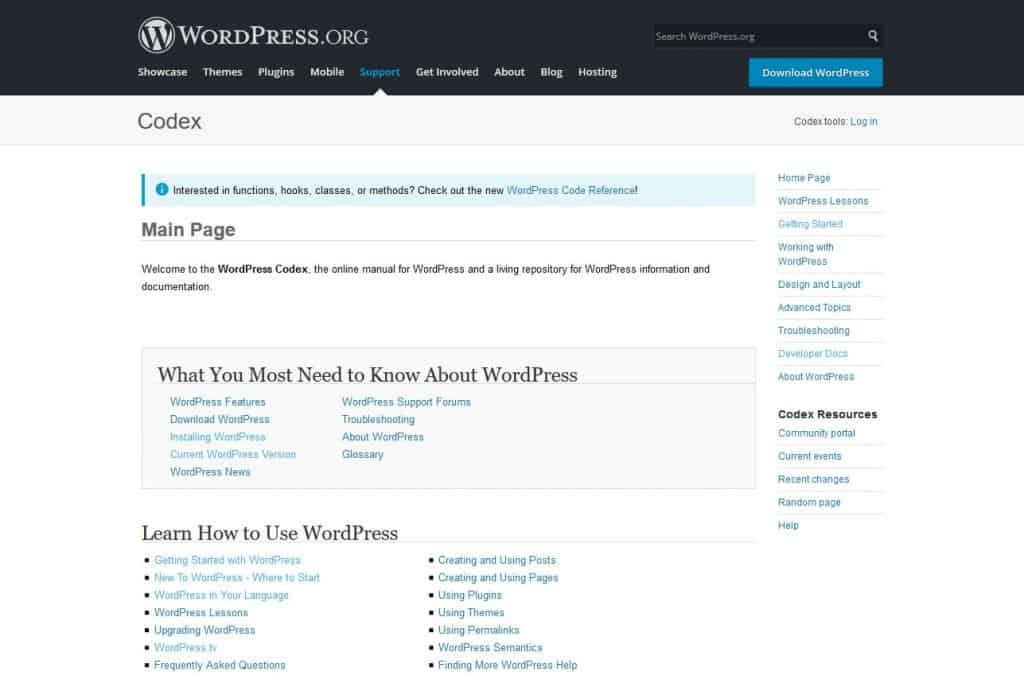
There is also a wide network of blogs published on the topic (such as this one) so you can usually find solutions to your problems posted online. The aforementioned freelance developers and agencies offer paid support when necessary.
Aside from that, you also have the option to go for managed WordPress hosting. When you do, your host takes care of all the technical parts of your website. That way, you are able to fully concentrate on creating content and marketing your site.

The platform itself is also well maintained with regular updates coming out every three to four months. These bring new features, improvements and security measures to keep your site a well-oiled machine.
Joomla
As the second-largest open source CMS on the web, Joomla also has a good support structure in place. The first address is the official help portal. You can ask questions and receive technical support there. The community is not as big as for WordPress but you can still get replies quickly and easily.
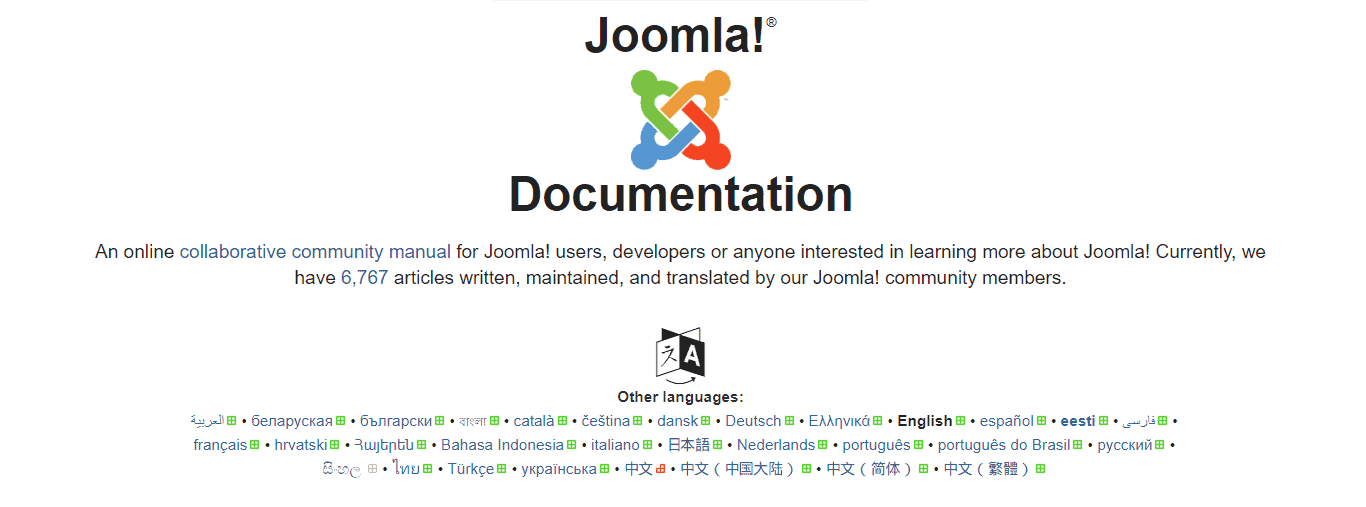
Aside from that, you can dig into the documentation, sign up to mailing lists and even swing by a dedicated IRC chatroom. Similarly to WordPress, there are third-party resources such as blog posts and paid trainings online. Professional services from developers are also available.
As for technical maintenance, Joomla is updated more frequently than WordPress. In general, there is a new minor version every one to three months. Major releases come out only about once a year.
Drupal
Drupal also comes with a regular update cycle. Users can expect a new version every few months.
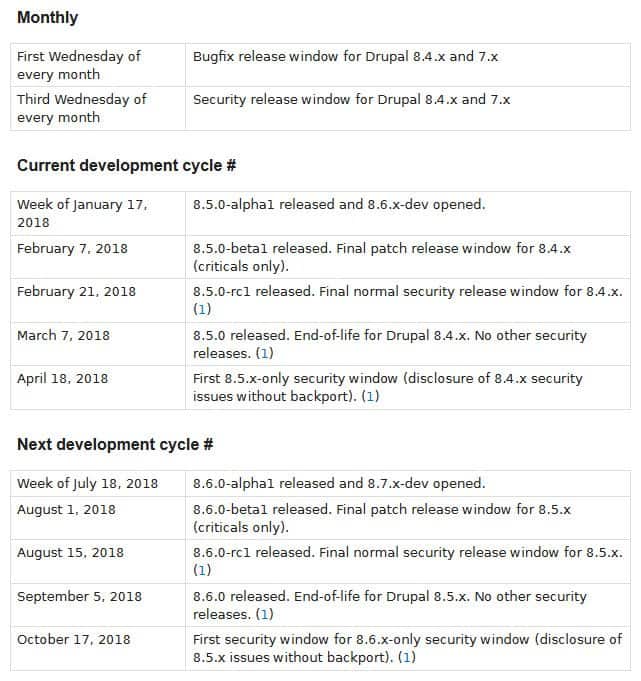
If you have technical difficulties or questions, you can rely on the community support in the form of documentation, support forums and user groups. The community is active and welcoming even though it’s smaller than Joomla or WordPress groups.
Site Customizability
The ability to customize websites built with a CMS (and the CMS itself) is paramount for users. The systems serve a highly diverse user base and need to be able to accommodate many different cases. Therefore, additionally to a solid core product, they have to offer ways to extend and modify it.
WordPress
Customizability is another advantage of the WordPress platform. There’s almost nothing that you can not change. Even the built-in options allow you to make sweeping design and functionality changes. From the admin panel’s color scheme and site design to custom menus, widgets, background images and header images.
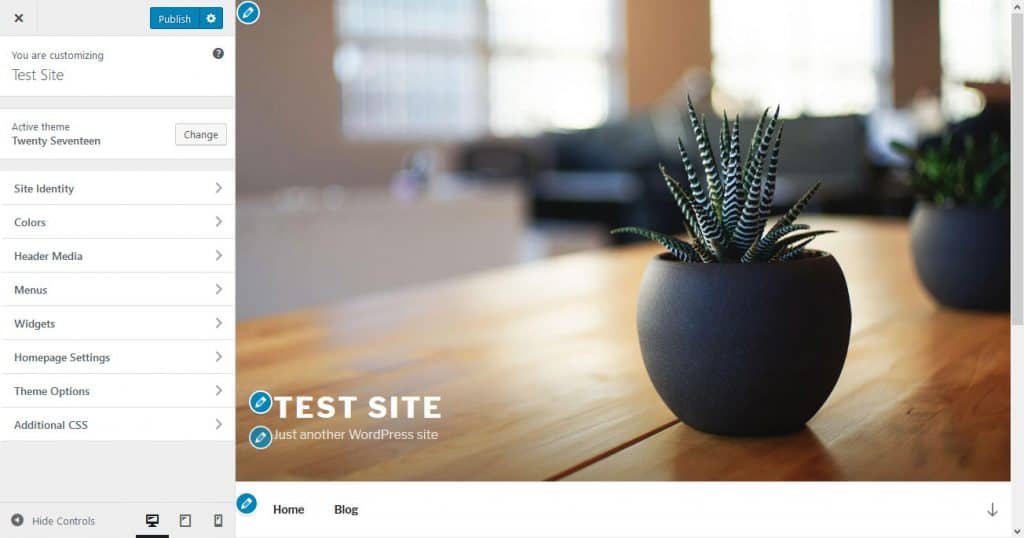

Additionally, there are almost 55,000 plugins and several thousand themes only waiting to extend your site. Whichever site purpose or functionality you have in mind, there are likely already specialized themes and/or plugins for it. That’s not even including the numerous premium offers.
Child themes give you the ability to modify almost anything on your site in a safe way. That way you can completely make it fit your needs.
In short, WordPress can be molded into any type of website you want.
Joomla
Joomla also has a theme and plugin ecosystem in place to add new features to your site. They also have many more different types of extensions:
- Templates — These are the same as for WordPress themes. Templates handle the look, feel and layout of your website including the back end.
- Components — Modify parts of the page body and have their own menu items in the Joomla back end.
- Modules — The equivalent to widgets. They add search forms, breadcrumbs and other page components.
- Plugins — These are event handlers that only execute under certain conditions, such as to block parts of the content.
- Languages — Pretty self-explanatory, more on that below.
What’s different about Joomla is that there is no central directory for themes. Instead, users need to find their own trusted sources.
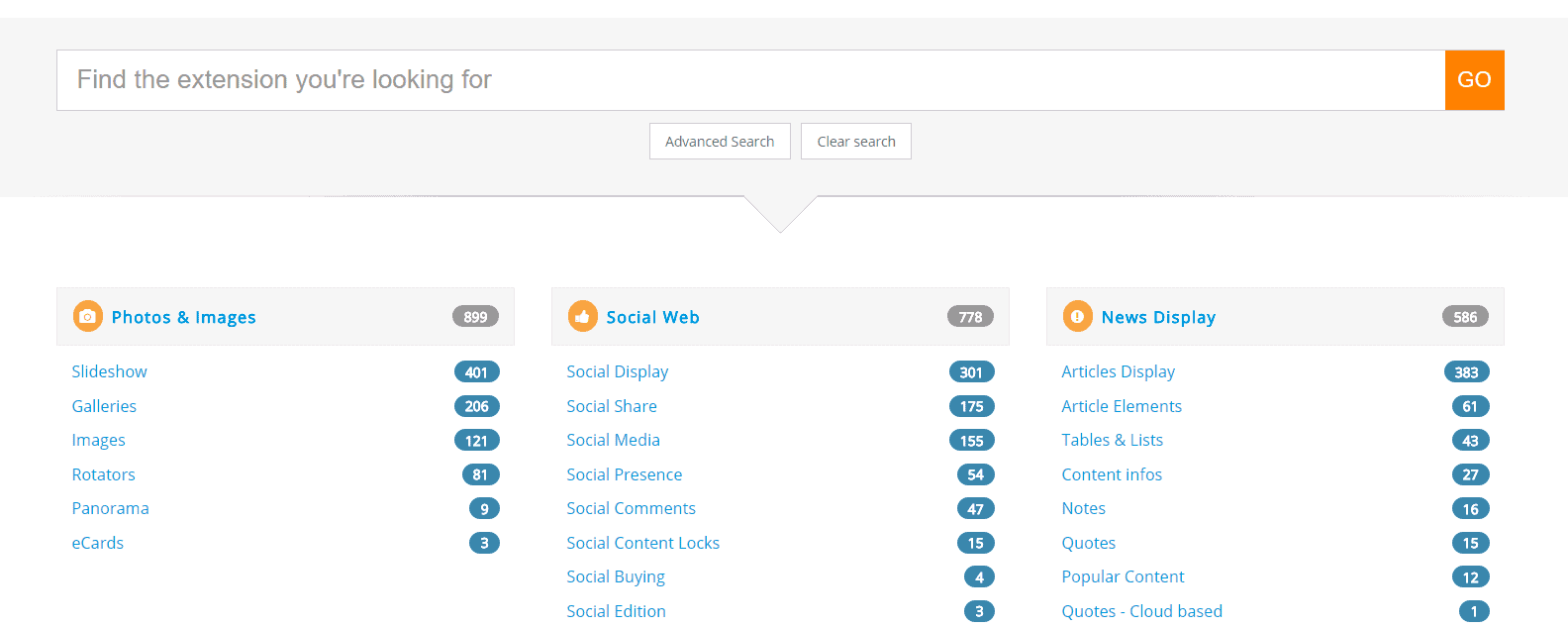
For components, modules and plugins, you can use the official directory. At the time of this writing, it contains almost 8,000 Joomla extensions, searchable by type, category, tags, compatibility and more.
Unlike WordPress, not everything on the directory is free. A good chunk is made up of paid extensions. Also, not all components are compatible with all Joomla versions. Yet, the same can be said about WordPress plugins that are no longer maintained.
Drupal
Drupal is all about building custom websites. For that reason, it comes with a lot of built-in customization options. You are also able to edit files directly and customize almost anything you want. Consequently, as a developer, there is very little that you can not customize.
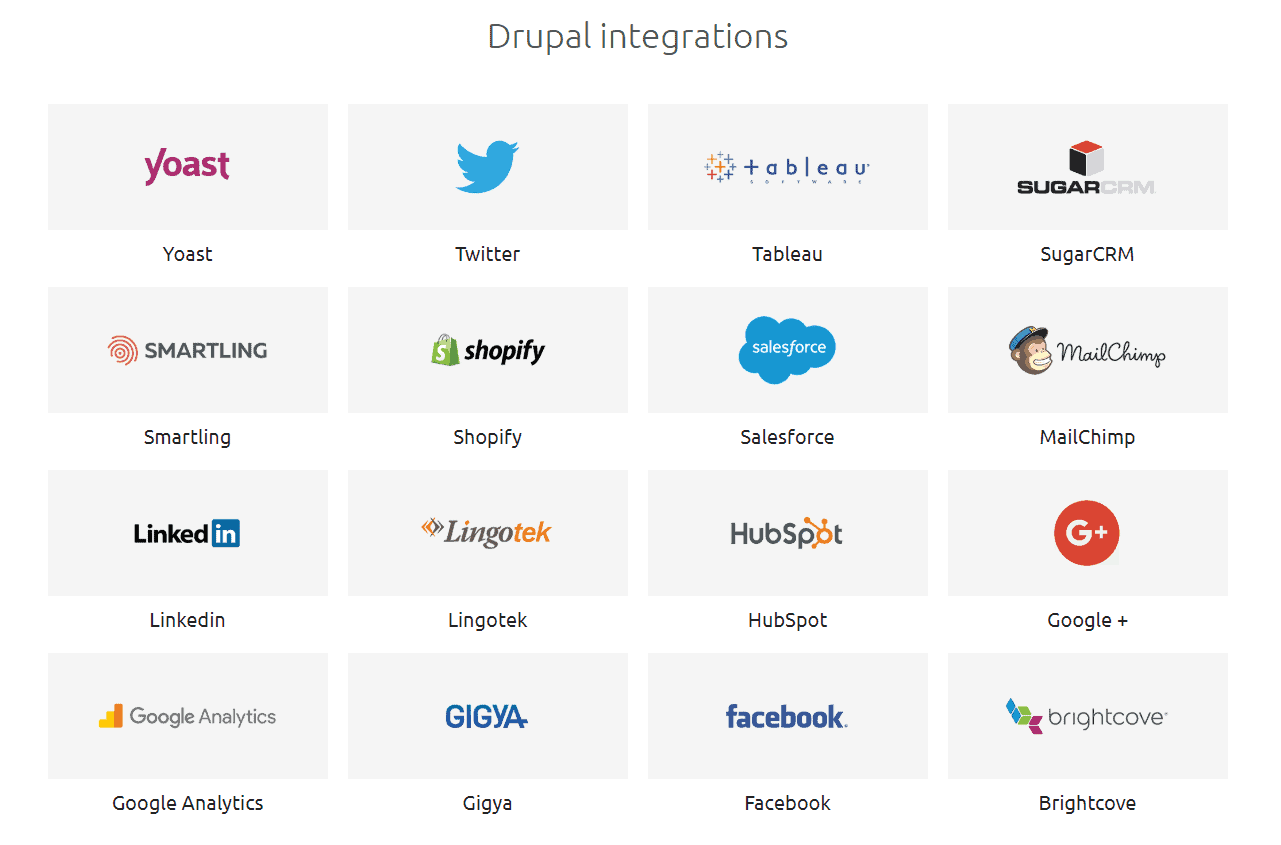
Additionally, like the other CMS, Drupal is also part of a healthy ecosystem. It offers 40,000+ modules and more than 2,600 themes to add functionality and design options to your site.
Due to enforced coding standards, they are also basically guaranteed to work together. That’s something that is not always true for WordPress plugins and Joomla extensions. Their installation is a lot more technical than with the other two CMS.
Site Performance
Page loading times matter both to visitors and search engines. Your site can have an award-winning design and the most valuable content but if it doesn’t load within a few seconds, some people will never wait to see it.
This is especially true on mobile devices, which have overtaken desktop computers in usage numbers. For that and other reasons, performance needs to be a crucial part of any CMS comparison out there.
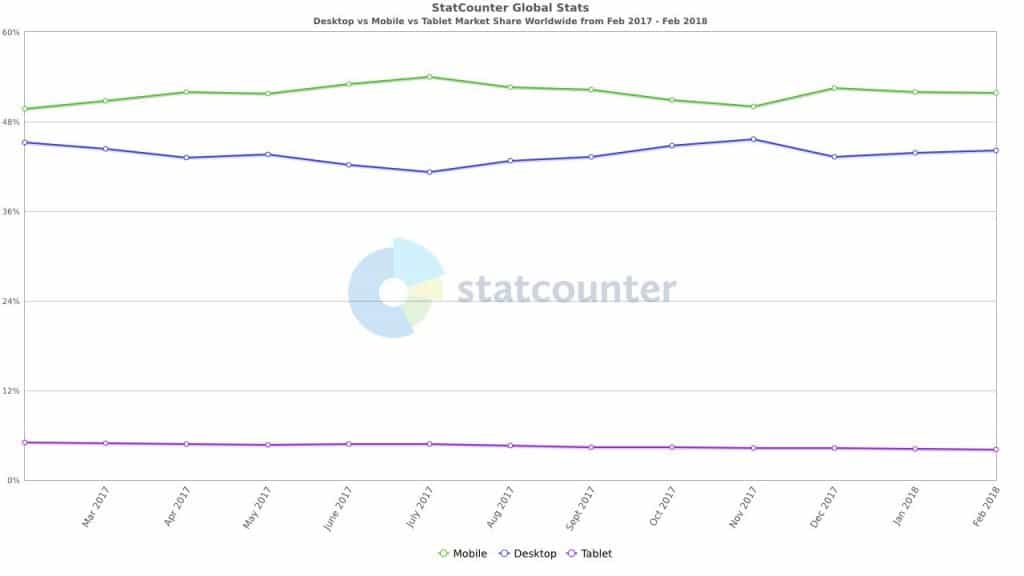
WordPress
Performance is often cited as one of the weak spots of WordPress. It’s true that its focus on providing backward compatibility and supporting older versions hold it back a little in this regard. At the same time, it’s partly because of the popularity of the platform.
While WordPress may be the least scalable of the three CMS on this list, it can still power large-scale websites with sub-second page loading times. As with everything, you need to know what you are doing.

First of all, there is the aforementioned WordPress managed hosting. If you opt for it, your provider takes care of the heavy lifting of site performance like caching and even site updates. That plus proper site maintenance (meaning not going crazy on the number of plugins) will already produce a quick loading site. Aside from that, there are many more things you can do to speed up WordPress.
The WordPress platform has also shown that it can successfully handle sites with thousands of pages and millions of monthly visitors. The notable users’ section should already tell you lots about its capabilities.
Joomla
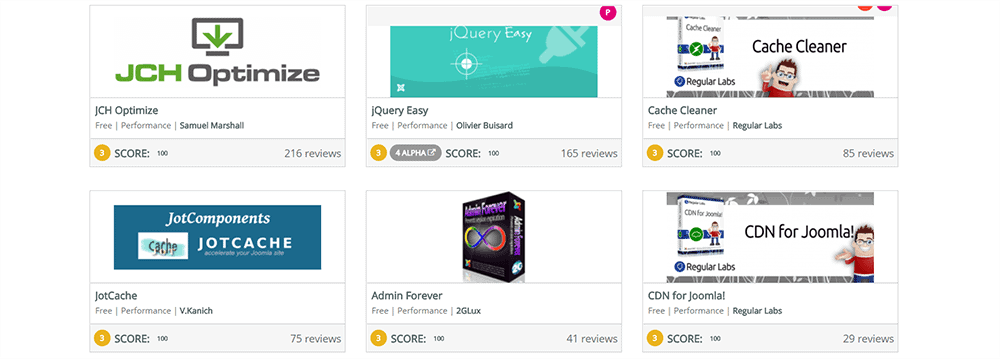
Joomla has a good reputation concerning performance. Part of the reason is that it has performance-boosting functionality built in. For example, you can enable caching and Gzip compression from the dashboard. It also comes with plugins to make it even faster.
Aside from that, it’s up to you to take the usual measures like minimizing plugins and HTTP requests, optimizing images etc. to make your site load quickly. There is also some Joomla-specific hosting, but it’s not nearly as common as for WordPress.
Drupal
The third option tends to be the system that produces the fastest-loading websites. That’s because Drupal is less resource intensive and demanding on the server. This makes it easier to support thousands of pages and simultaneous visitors. Consequently, Drupal is extremely scalable, which explains its popularity among larger websites.
It also has extensions to add caching and other things to make sites even faster. Keep in mind that just like the other CMS on this list, it can be bogged down if you don’t know what you are doing.
Website Security
Any website owner is aware of the inherent risk of running a website. Those who are not, learn that quickly! Spam and automatic hacking attempts are our daily bread. While a lot of the burden for safety lies with the hosting provider, your chosen CMS also needs to be able to deal with it.
WordPress
In the past, WordPress has gotten a lot of bad press when it comes to security. Some of it is deserved.
However, the perspective is also a bit skewed. Due to its popularity, WordPress also offers a bigger target for hackers. With such a wide user base, there are many more opportunities to try your luck.
Aside from that, by now WordPress has gotten its act together. One example is that all WordPress sites running version 3.7 and up now apply maintenance and security updates automatically. Therefore the WordPress core product has never been safer. Current security problems are most often related to third-party plugins, not the CMS itself.

Aside from that, one of the biggest weak spots for WordPress security is the user. Insecure login information and websites that have not been updated are among the chief reasons sites get hacked. For that reason, it’s your own responsibility to educate yourself (for example on how to move WordPress to HTTPS) and do the best on your part!
Joomla
Joomla also places much of the burden for keeping your site safe on the user. While the community reacts to vulnerabilities and creates patches, the application of the security is up to the individual user. It doesn’t happen automatically, yet you can do it from your back-end.
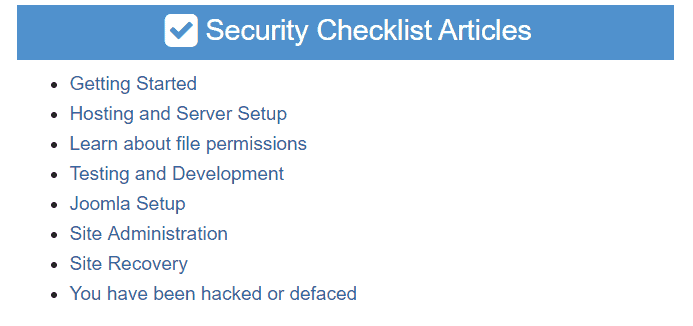
Aside from that, there are also extensions to increase your website’s security. The Joomla documentation also offers a security checklist. It covers everything from hosting over setup and administration to recovering from a hack. To secure your site, this is a good place to start.
Drupal
Security is one of Drupal’s strong suits and the CMS is very safe out of the box. Should a vulnerability be discovered, you will hear about it on the official website. Patches will follow quickly.
Aside from that, Drupal offers extensions to make your site safer. For example, there is a module that creates security reports inside the back-end. This helps you spot and deal with any site weaknesses.

Drupal has also seen its share of trouble, especially in 2014 when an SQL injection vulnerability led to a number of websites being hacked. Still, it usually lives up to its reputation.
Search Engine Optimization
SEO is one of the main concerns for many site owners. Search engines are still one of the most important sources for generating traffic. While Google doesn’t care about which CMS you use as long as it delivers content in a way they can understand, the ease of being able to take care of SEO matters for you as a user.
WordPress
WordPress’ search engine optimization is pretty good out of the box with features like custom URLs and SEO-friendly markup. That’s probably part of the reason why it was endorsed by important people at Google.
WordPress takes care of 80 to 90 percent of (the mechanics of) search engine optimization – Matt Cutts (former head of web spam at Google)
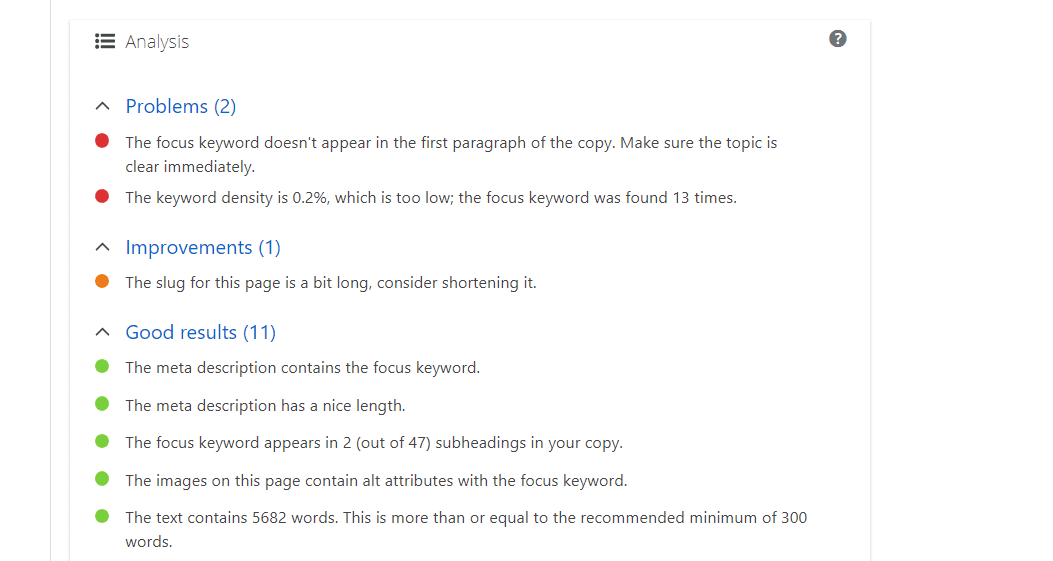
Additionally, plugins like Yoast SEO give you complete control over every aspect of SEO and immensely help with creating optimized content. We use it for every article here on Website Setup.
With mobile SEO becoming more important, WordPress has seen a big push towards responsive design. By now, every theme accepted into the directory needs to adjust to mobile devices by default. There are also plugins to support Google Accelerated Mobile Pages.
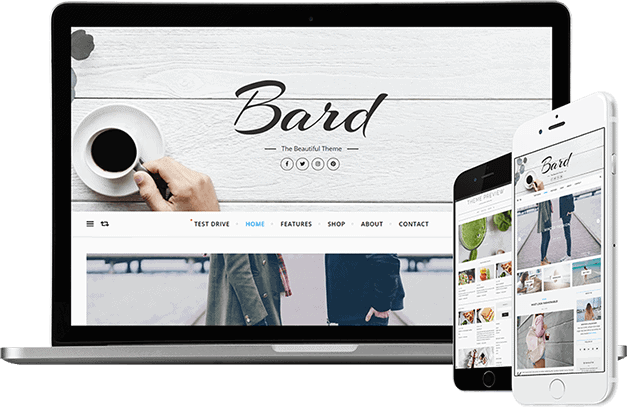
In short – in terms of SEO, WordPress has got you covered!
Joomla
Doing SEO in Joomla is slightly messier. It does have solid functionality like URL rewrites (to include keywords in your page and post address), meta descriptions, title tag optimization and even metadata like noindex and nofollow out of the box. It is more complicated to implement than with WordPress. Especially beginners might struggle with it.
Aside from that, there is an extension available to give you extra capabilities. In overall, Joomla is considered less SEO friendly than WordPress.
Drupal
SEO best practices are also very much built into Drupal. For example, there is a built-in caching for fast page loading times (search engines care about that) and meta tags.
The platform also has extensions to further improve your SEO – for example, an SEO checklist or XML sitemap module. Funny enough, there even used to be a Drupal version of Yoast SEO. By now another plugin is available under that address but you can still see it in the URL.
Aside from that, there are plenty of mobile responsive Drupal themes to make sure your site looks good on phones and tablets.
Translation and Localization
Companies and websites are operating in an increasingly international market. For that reason, they need to appeal to visitors from different areas of the world. The ability to localize and translate your content is a crucial feature in any CMS comparison.
WordPress
WordPress has been making a push in the direction of localization in recent years. Thanks to measures like global translation day, the platform is now available in dozens of languages. Each user can also choose the language of their back-end — perfect for multilingual teams.
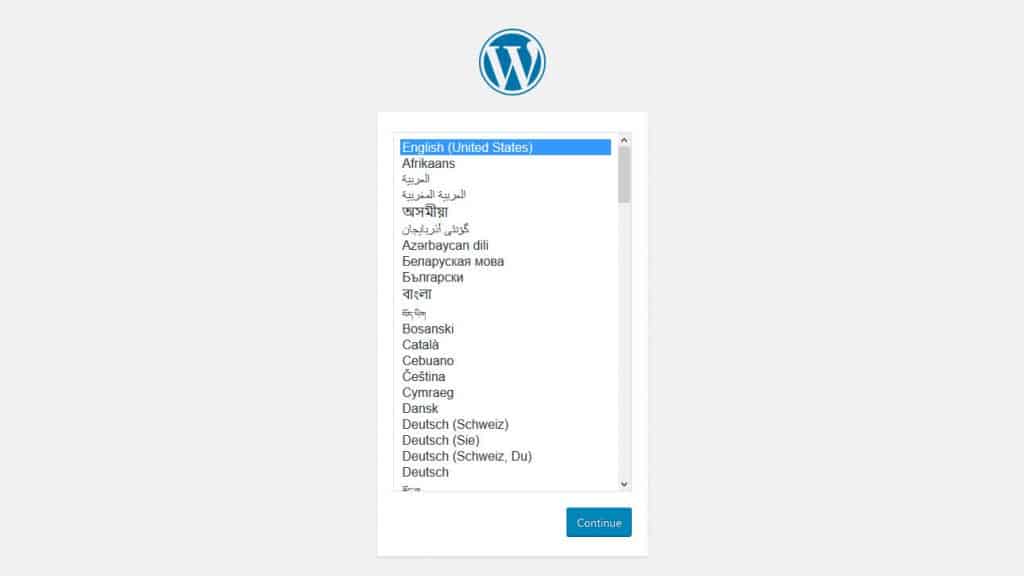
Aside from that, WordPress has built-in functions to help developers make their themes and plugins translatable. There are also a number of excellent plugins to translate website content, including WordPress Multisite. The latter lets you build a network of websites from one installation, each with its own language if necessary.
Joomla
Localization and translation are something where Joomla shines. It has translation packs available for many languages.

Additionally, there are language extensions that allow users to translate the admin area in the back-end. Joomla also has default capabilities to handle multilingual content so you can start creating content in another language any time.
Drupal
Drupal has been translated into many languages with different levels of completion.
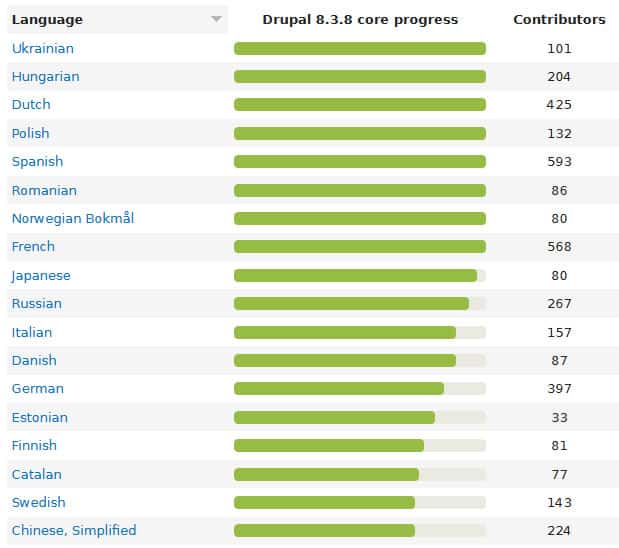
Consequently, you are able to run your website in your own language and can also install more languages. Multisite is also available with Drupal.
Aside from that, the ability to translate content is part of Drupal core. There is no need to install extensions to do so.
Team Collaboration
Few websites are one-person projects. Especially in the commercial and news sector, there are often whole teams running each part of a website. Consequently, the CMS has to provide the tools to work together effectively.
WordPress
To ensure effective team collaboration, WordPress offers different user roles and capabilities out of the box. That way, you can give people on your site only the abilities they actually need. If the default roles are not working for you, plugins like User Role Editor allow you to create custom solutions for your site.

For collaborative content creation, the WordPress editor offers revisions to track changes. In addition to that, there are a number of plugins to enhance your editorial workflow. Among them are Edit Flow and Editorial Calendar. The aforementioned language options make it a great option for international teams.
Joomla
The Joomla platform also comes with different access levels and permissions. Like WordPress, you can also see your content’s history to track changes over time.
Aside from that, there are plenty of extensions for task management and workflow improvements as well as plugins to control access levels for other users.
Drupal
Drupal also offers collaboration tools. Even though the platform doesn’t have predefined user roles, it allows you to make your own and control permissions for each user individually. While its main focus is not blogging, there is still a revision tool to work on content together with other authors.
Types of Websites You Can Build
As should be apparent by now, all of the systems discussed in this CMS comparison share features and capabilities. This is to be expected as they have the same goal after all: Letting people create and manage websites. Each of them has areas where they shine and types of websites they are especially suited for.
WordPress
Even though WordPress is now a fully-featured content management system capable of powering any kind of website, its roots are in blogging. For that reason, it does this part extremely well.
If you want to build a blog or make blogging central part of your marketing strategy, WordPress is the way to go. It has all the necessary features out of the box from post archives to taxonomies to a commenting system. While the other candidates of this CMS comparison can also be equipped with blogging capabilities, WordPress takes some extra steps.
E-commerce is another strength of WordPress. Not only is WooCommerce the most popular WordPress e-commerce extension, but it also runs almost half of the online shops on the web.
Joomla
Joomla, on the other hand, is the CMS most capable of creating social networks. It has a lot of built-in functionality for membership sites, forums and other ways to enable user-generated content. There are also extensions to further increase its capabilities in this area.
Joomla also excels in the area of e-commerce with many extensions and templates for the purpose.
Drupal
As mentioned, Drupal is the most scalable CMS of the three. For that reason, it’s the best to build large, custom, enterprise-level websites. It can also power community platforms with multiple users, online stores, social networks and publishing sites.
WordPress vs Joomla vs Drupal – Expert Opinions
Do you already know which CMS to choose? In case you are still on the fence, we reached out to some experts in this area to weigh in on the CMS comparison.
Here are their replies:
Travis Totz, Modern Tribe Digital Agency:
We have had experience in all three CMS platforms and used to work on all of them throughout our long history. Honestly, over time we simply found that when it came to Drupal and Joomla projects, within roughly six to nine months after completing big builds our clients would come back for more training whenever an editor/stakeholder moved on. However, when it came to big WordPress projects, users just seemed to figure it out. This is a huge advantage for beginners. The usability and enormous community adoption was also great for us as an agency, as well as users just starting out.
WordPress has been our favorite CMS for many years because of those aspects as well as many others. We’ve built many enterprise-level solutions within WordPress and it’s hands-down been the best platform to build on top of for our team. Tribe has been able to integrate some really amazing technologies within WordPress and it’s flexibility shows — not to mention all of the opportunities that the WP REST API now allows us to take advantage of.
Jenni McKinnon, WP Pros(e):
I’ve been a web developer for over 18 years and I remember the blogging craze well when it first started. I tried out Drupal, WordPress and later, Joomla. I decided early on that I would focus on WordPress.
Still, I have evaluated all three platforms at least a few times as updates rolled out for each of them over time. After each review, I decided to stick with WordPress and there are several professional reasons for it.
Since WordPress is backed by a strong open source community, there are vastly more options and plugins available. Of course, there’s a learning curve to use the platform. But, it has proved to be well worth it considering that in the long run, it’s a lot more efficient and nearly effortless to develop with WordPress while also achieving professional and incredible results.
CMS Comparison – Which is the Right One for You?
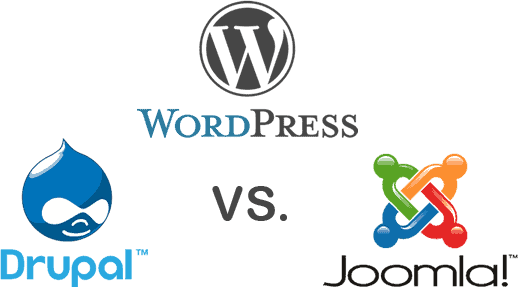
Open source content management systems have been a force of change on the web. They have enabled scores of people to build and maintain their own web presence. Over time, WordPress, Joomla and Drupal have emerged as the most popular.
As PHP-based open source projects, these three systems have a lot in common of how they approach building websites. At the same time, there are a lot of differences, making them ideal for different target groups. For that reason, this CMS comparison is less about what is the best CMS generally but more about which one is the best for you and your purposes.
To help you make that decision, let’s quickly summarize the above:
- WordPress — Beginner friendly and allows you to get started quickly. Even without any coding experience, you can still build a highly functional website suitable for large amounts of traffic. The WordPress platform is customizable, secure, SEO and mobile friendly, easy to localize and collaborate on as well as easy to pass on to clients. It also has by far the largest community and ecosystem but can be a challenge to scale.
- Joomla — If you are looking for a middle ground between out-of-the-box power and user friendliness or a good option for social networking and e-commerce, Joomla might be the one for you. It has a steeper learning curve, a smaller ecosystem and is less SEO friendly. It’s still a very solid option used by big brands.
- Drupal — Finally, if you are aiming to build huge sites with extensive features and unlimited customizations, Drupal may be the way to go. It offers a lot out of the box and is built for performance. At the same time, it is absolutely not suitable for beginners. For that reason, you either need the budget to hire a developer or the time to learn the ropes, including coding.
While we here at Website Setup like WordPress (since our site is based on it), the choice is up to you. You need to take a look at the features and capabilities of each CMS and then decide which is most suitable for your particular project, site or needs.
If we can help with that somehow, please don’t hesitate to reach out. Leave any questions in the comments section below. We’d be happy to help!